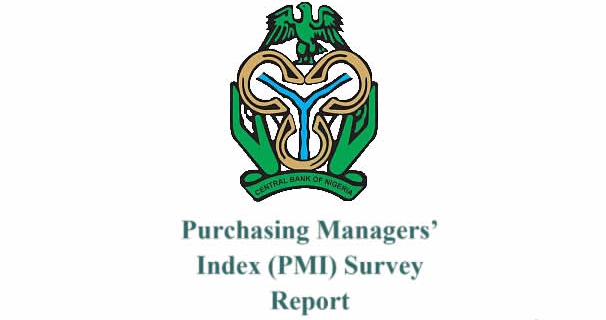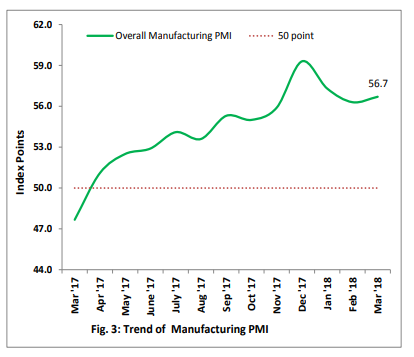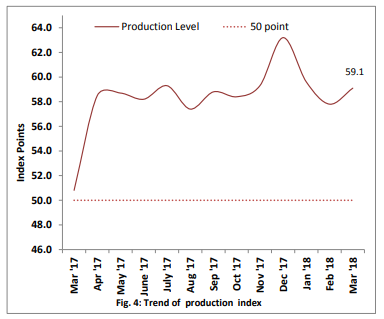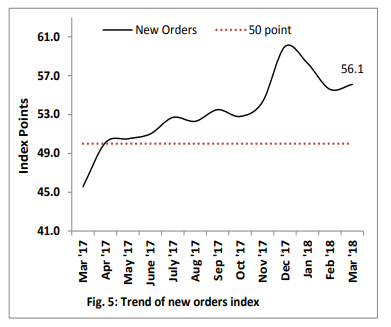Introduction
The March 2018 PMI survey was conducted by the Statistics Department of the Central Bank of Nigeria during the period March 12 – 22, 2018. The respondents were purchasing and supply executives of manufacturing and non-manufacturing organizations in 31 locations in Nigeria (Fig. 1). The Bank makes no representation regarding the individual companies, other than the information they have provided. The data contained herein further provides input for policy decisions.
Data and Method of Presentation
The Manufacturing and Non-Manufacturing PMI Report on businesses is based on survey responses, indicating the changes in the level of business activities in the current month compared with the preceding month. For each of the indicators measured, this report shows the diffusion index of the responses.
The diffusion index is computed as the percentage of responses with positive change plus half of the percentage of those reporting no change, except for supplier delivery time, which is computed as the percentage of responses with negative change plus half of the percentage of those reporting no change.
The composite PMI for the manufacturing sector is computed as the weighted average of five diffusion indices, namely: production level, level of new orders, suppliers’ delivery time, employment level and raw materials inventory/work in progress, with assigned weights of 25%, 30%, 15%, 10% and 20%, respectively. The composite PMI for the non-manufacturing sector is computed from four diffusion indices, namely: business activity, level of new orders, employment level and raw materials inventory, with equal weights of 25% each.
A composite PMI above 50 points indicates that the manufacturing/non-manufacturing economy is generally expanding, 50 points indicates no change and below 50 points indicates that it is generally contracting. The subsectors reporting growth are listed in the order of highest to lowest growth, while those reporting contraction are listed in the order of the highest to the lowest contraction.
Manufacturing PMI Report
The Manufacturing PMI in the month of March stood at 56.7 index points, indicating expansion in the manufacturing sector for the twelfth consecutive month. (Fig. 3 and Table 1).
The index however grew at a faster rate, when compared to the index in the previous month. Of the 14 subsectors surveyed, 11 reported growth in the review month in the following order: electrical equipment; cement; petroleum & coal products; food, beverage & tobacco products; chemical & pharmaceutical products; fabricated metal products; paper products; transportation equipment; plastics & rubber products; textile, apparel, leather and footwear and primary metal.
The remaining 3 subsectors contracted in the following order: nonmetallic mineral products; furniture & related products and printing & related support activities.
Production Level
At 59.1 points, the production level index for the manufacturing sector grew for the thirteenth consecutive month in March 2018. The index indicated a faster growth in the current month, when compared to its level in the preceding month.
Seven of the 14 manufacturing subsectors recorded increase in production level, 3 remained unchanged, while the remaining 4 recorded declines in production level during the review month (Fig. 4 and Table 2).
New Order
At 56.1 points, the new orders index grew for the twelfth consecutive month, indicating increase in new orders in March 2018. Six subsectors reported growth, 5 remained unchanged while 3 contracted in the review month (Fig. 5 and Table 3).



















